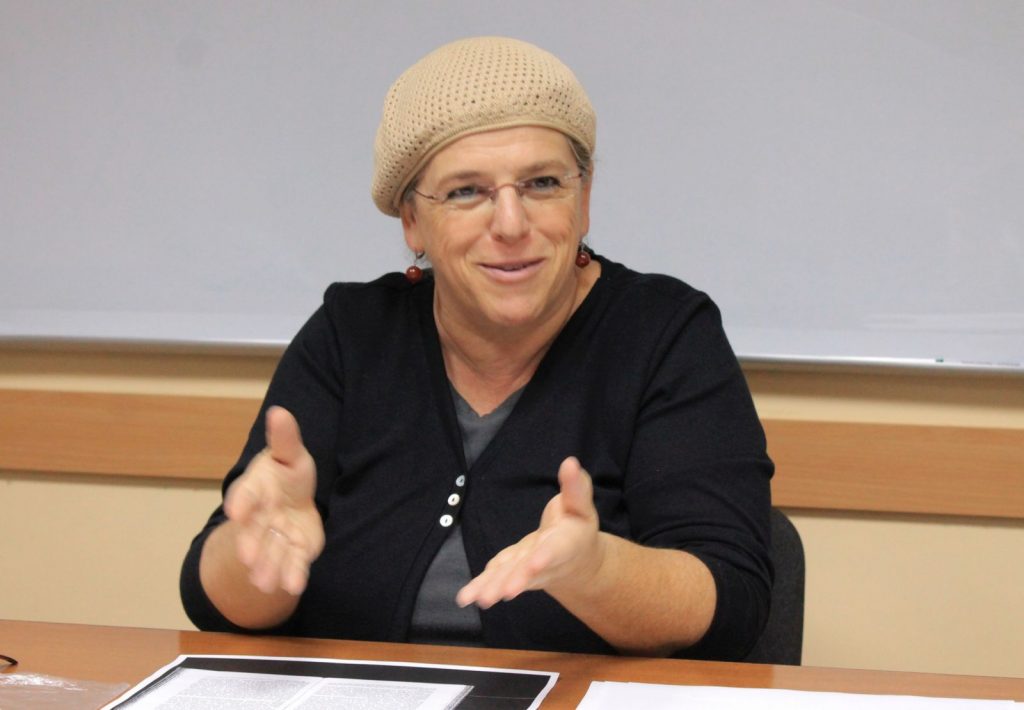Ukrainians, Jews, and others. Life is more complicated than historical memory
Why did the Jews of Kyiv have the writings of Rambam translated into the Ruthenian language? How did the Jewish elite of the Rzeczpospolita [the Polish-Lithuanian Commonwealth, 1569-1795—Ed.] drive out their fellow community members from cities? Why has the sense of a shared fate emerged among Jews and Ukrainians only today? These topics are explored in an interview with Dr. Judith Kalik of the Hebrew University of Jerusalem, who is a guest lecturer in the Master’s Program in Jewish Studies at the National University of Kyiv-Mohyla Academy (NAUKMA).
— Judith, can one call the history of the development of Ukrainian–Jewish relations unique? After all, there was always a third—superfluous—factor in these relations: the Poles. Did Ukrainians view Jews exclusively as supporters of the Poles?
— The problem is that both Ukrainians and Jews did not have the slightest chance of becoming part of the ruling class. The specific character of their relations stems from this. The Ukrainians were not a minority in the literal sense of this word. However, neither were they the titular nation (with all ensuing rights), as they were constantly under foreign rule, the Polish or the Russian crown. For that reason, the Jews treated them with less reverence than they did the Poles. This was also the attitude to the Orthodox Church, which, unlike the Catholic Church, did not symbolize power, even though the majority of the population was Orthodox at the time.
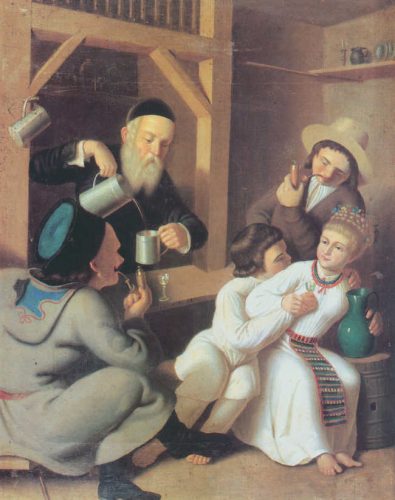
In many countries Jews were part of a multinational society, but Ukraine is truly a special case. Here, Jews were dealing with a demographic majority—Ukrainians—which did not have its own state, and with a minority—Poles.
However, the bulk of the Jewish population lived in other regions of Ukraine—Volyn and Galicia—that did not experience the trauma of Polish colonization, and these Jews absolutely did not appear there as having hitched their wagon to the magnates.
— What is known concretely about Ukrainian–Jewish contacts before the New Era?
— At the very least, a Jewish community already existed in Kyivan Rus′ in the tenth century, and it was not Ashkenazic. They were apparently Canaanite Jews, who spoke Slavic languages, not Yiddish, which had not been formed yet. There are countless, different mentions of these Jews: in responses, in the diaries of travelers, and in information from non-Jewish sources. “I was surprised,” writes a Jew from Byzantium, “to encounter a kinsman in Kyivan Rus′ who did not know other languagues apart from Slavonic.”
This community existed at least until the fifteenth century, and subsequent mentions of it are connected with an immense corpus of translations of Jewish classical sources into the Ruthenian language (which formed the basis of the contemporary Ukrainian language), the official language of the Grand Duchy of Lithuania. It is precisely into this language that in the late fifteenth century the Jews of Kyiv translated a huge number of sacred texts, in particular the works of Rambam or the Book of Six Wings by Immanuel Bonfils from Tarascon. These translations were done by Jews who were fluent in the Slavic languages, and were not, without a doubt, Ashkenazim (for whom Yiddish was already the chief language of communication). Why was such a colossal amount of work done? To this day there is no satisfactory answer to this question. The theory that these translations were designated for Jewish women who were not fluent in Hebrew seems bizarre, as women did not study Rambam.
This period is generally poorly researched, and shortly the encounter with their Ashkenazy countrymen took place, and the Slavic Jews assimilated into a much stronger Jewish tradition.
— The period of Polish colonization is probably also filled with myths and stereotypes about the specific character of Jewish life in Ukraine…
— There were, indeed, many stereotypes. Few people know, for example, that in the seventeenth and eighteenth centuries the Jews stop engaging in usury and, on the contrary, take loans from the church, essentially the most powerful banker of that time. In Rome as early as 1606 the papal throne founded the Bank of the Holy Spirit, which was disguised as a charitable organization.
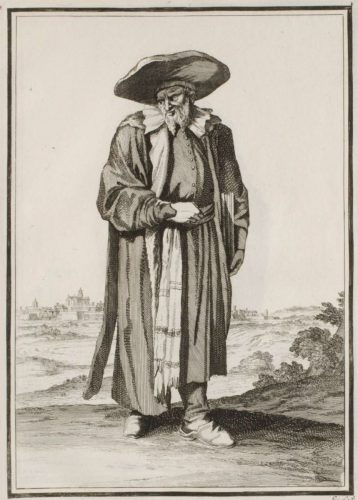
The tradition, in accordance with which the church could not lend money with interest, was bypassed with the aid of the mechanism of the Wiederkauf (Ger. “repurchase”), when, for example, a synagogue was built against collateral. In borrowing money, the community was seemingly selling the synagogue and beginning to rent it from the church, and the value of the lease was equal to the interest on the loan. The church had a surplus of cash, it forced money to work. However, it was also convenient for the Jews since inflation outstripped the payment of interest charges on the loan. Nevertheless, Jewish communities owed the church hundreds of thousands of zloty. This fact is well known to researchers, but it is not well known to wider circles of readers, before whom stands the image of the Jewish usurer.
The perennial depiction of Jews being humiliated and insulted is also far from reality. Jews felt quite confident in the eastern territories of the Rzeczpospolita: in Ukraine and Belarus. The Orthodox bishop Heorhii Konysky describes how Jews, together with a magnate’s Cossacks, broke into a priest’s manor and beat him, suspecting him of making moonshine (vodka), thus violating the magnate’s monopoly on distilling. We are accustomed to thinking that when someone is beaten, it is invariably a Jew, and not the opposite. However, there were hundreds of such incidents; out of the majority of them was woven the fabric of daily life, which differed absolutely from the epoch of crises—the Khmelnytsky era or the Koliivshchyna.
Our ideas about invincible Jewish minds that always win any competitive struggle are also a stereotype. Life was considerably more complicated, as Jews in the cities could not compete on an equal basis with Christians, who had the law on their side. That is why they sought new spheres in which to apply their talents or they continued to engage in their usual trades, but now in a new place—that’s how the departure to rural areas began, something that urban Poles did not dare do because they risked a loss of status. In the Crown cities Jewish tavern-keepers could be counted on the fingers of one hand; they settled mainly in villages, where there was no competition.
For this reason, the Jews, unable to withstand the competition with the church, stop engaging in usury.
— In other words, such an atypical—for the Jews of Europe—phenomenon as the exodus from large Crown cities, as well as the phenomenon of the shtetl, was determined by the competitive struggle with the Christians?
— First of all, this is connected with the efforts of magnates, who become the dominant force in the Rzeczpospolita. They are interested in founding their own cities and towns, they summon the Jews to them, and grant them a privilege; a private privilege that granted more rights to the Jews than a Crown one. This also pertained to the sphere of security and freedom of confession, which led, for the most part, to the emergence of the shtetl.
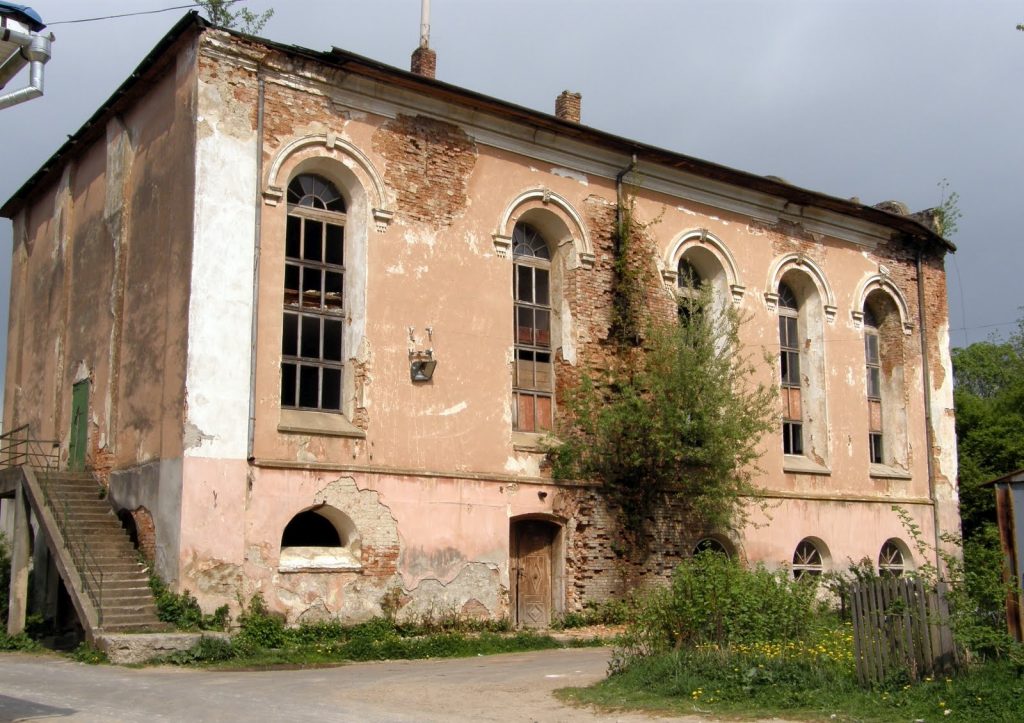
One must not overlook internal Jewish competition, which is also instrumental in the Jews’ exodus from large cities. It was not for nothing that all the main cities—Lublin, Cracow, Poznan, and others—had suburban Jewish communities that consisted of Jews whom the urban Jewish community had pushed out of its limits.
It was these suburban communities that shouldered the main burden of internal Jewish taxes, from which a much more powerful community (for example, in Lublin) was exempted. There was a divide that existed not just between unfortunate Jews and hard-hearted goys; the most brutal competition took place among Jews themselves.
For that reason, constant migration takes place from cities to villages, from Crown cities to shtetls, from the west of Poland to the east of that country.
— What was the social structure of the shtetl? Do we not romanticize it?
— Without a doubt, it is quite often turned into a symbol of a lost Jewish idyll. Although it should be understood that in the mass consciousness the classic shtetl is located in the context of the nineteenth century, and that is the period of its decline. The flourishing of the early shtetl was based on the might of the Rzeczpospolita and on the influential power of the Polish magnates. During this epoch Jews had quite a comfortable life. In Russia, after the first and especially after the second partition of Poland, the shtetl was not the same as it had been, but the Jews cannot abandon it, as the Pale of Settlement has been established. We know quite a lot about this later shtetl in the Russian Empire, which becomes a trap, where the process of the impoverishment of the Jewish population is taking place, and for some reason in particular we romanticize it.
However, despite all this romanticizing, it cannot be denied that there was a well-developed community social network precisely in the shtetl, like nowhere else. Philanthropy and the precept of tsedakah [the religious obligation to do what is right and just—Trans.] always comprised a significant part of the Jews' relationship with the Almighty; communities were maintained on this basis.
Christian authors often reproach their fellow countrymen, saying, “our poor people go to the Jews to beg alms, what have we come to, how well the Jews have thought this out: there is care for orphans, and refuges for elderly people, and hospitals for the underprivileged…”
— Are there any examples of a Ukrainian–Jewish rapprochement during this period?
— There are many, and on various levels: from business relations to personal connections. It suffices to read the memoirs of Ber of Bolechow [Ukr. Bolekhiv], who was accused of minting counterfeit coins and was imprisoned. He was freed by Carmelite nuns, who essentially took the blame on themselves.
Sometimes the church even played the role of protector, for example, when it allowed a rural community to own a Torah scroll, to which the urban Jewish community objected because this meant the separation of the rural community from the urban one.
The closest ties existed on the level of domestic servants; during periods of trouble, servants often followed their Jewish masters; these people knew the basics of halakhah, they spoke Yiddish. The shtetl was a self-sufficient structure with a Jewish majority, but in villages, contacts were very intensive.
In general, Jewish historiographers like to quote the Torah: “Am levadad yishkon uva-goyim lo yitchashav” (“Behold, Israel is a people that shall dwell alone, and shall not be counted among the nations”). There is a background to this image. Of course, borders existed, but they were not so inviolable as they may seem to us today.
For example, it is believed that Jews were practically not fluent in local languages, but this is a myth. They were not only fluent, they spoke, read, and wrote [in them], and they were not too bad at it either. It is simply that knowledge of the “goy’s” language was still not part of the cultural ideal, as it had been during the Age of Enlightenment. But Ber of Bolekhiv had a good command of Polish and Ukrainian, and even Nathan Hannover cites Polish chronicles. We forget that a minority always knows somewhat more about the majority than the other way around; it cannot be otherwise.
Thus, on the one hand, Jews were not completely isolated, and on the other, there was a special interest in them in Ukraine; the Jews were an element of an inter-Christian theological dispute; for example, about how to receive communion: with bread (like the Orthodox) or with wafers, that is, with matzo (as practiced by the Roman Catholics). Once again this leads to a dispute about whether the Last Supper was a Passover Seder. In reality, Christians of all rites were familiar with Jewish religious practices better than we think.
Of course, there were frictions, both religious and economic ones, not simply because Ukrainians viewed the Jews as followers of the Poles, but also because the Jews themselves saw themselves as part of the Polish state. Their patriotism was Polish patriotism; this is clearly seen in the works of Nathan Hannover.
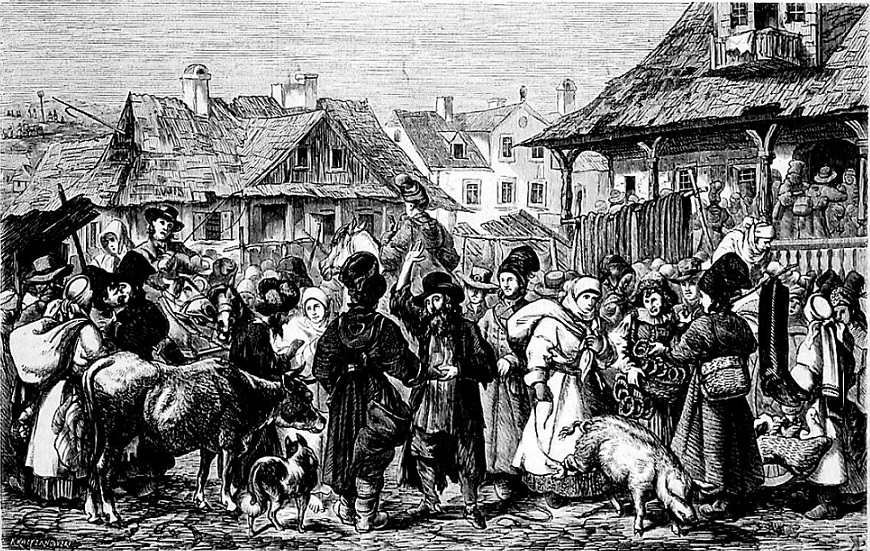
— To what degree do such pages of history as the Khmelnytsky rebellion or the Koliivshchyna, which were tragic for the Jews, fit into the general context of the attitude toward Jews in Eastern Europe?
— That’s the thing of it: they do not fit, which is why the outbreak of violence was such a trauma; it is a breaking point in Ukrainian history. And for Jews, the most tragic memory of this epoch became the most striking one; that’s natural. Historical memory is considerably broader than historical reality; one should not forget that everyday life looked completely different.
— Can one trace somewhat of a transformation in Ukrainian–Jewish relations over the centuries? After all, on the one hand, oppressed peoples should have a common goal; on the other, a minority always orients itself on the central authorities, and this is one of the main accusations against Jews put forward by adherents of the Ukrainian national project.
— The Khmelnytsky rebellion was an outbreak that awakened national self-awareness. The Jews begin to view Ukrainians as a separate people with whom it is crucial to build relations. In Left-Bank Ukraine there is a different situation. There, during the Hetman period, a commonality of Ukrainian and Jewish interests was formed. The hetmans and the Ukrainian nobility usually resisted orders to expel the Jews in the eighteenth century and sought to obtain permission for their return.
There are extant testimonies about Jewish Cossacks, including those found in rabbinical responses. A proportion of Jews identified themselves with earlier Ukrainian nationalism; this is a historical fact. Analogous processes were taking place on the other side of the barricades. For example, Berek Joselewicz, the commander of a Jewish light cavalry regiment, saw himself as a Polish patriot.
Of course, Jews in general, like any minority, were oriented on the authorities. And if these authorities were in conflict with the Ukrainians, then which side the Jews ended up on is understandable. This also explains the weak acculturation to Ukrainian culture in a much later period. They integrated themselves into the Russian, Polish, and Austrian cultures; in other words, dominant cultures. Ukraine is simply not on the political map of the world yet when the Jews become patriots of national states. That is a feature of Ukrainian–Jewish relations.
— One would think that some kind of feeling of shared destiny would have emerged against this background, if we’re talking about peoples without their own country…
— It does not emerge, and this is an interesting problem. When the Poles lose their independence, the feeling of a shared destiny with the Jews is quite noticeable. Between the second and third partitions of Poland, the magnates turned to a number of distinguished philosophers of the time, commissioning treatises about what should be done to overcome the crisis and preserve their culture. One of the most famous respondents was Jean-Jacques Rousseau, who wrote back to them, saying that you will still lose your independence, so I advise you to follow the Jews’ example. Then he recounts in detail how and what must be done in order to preserve national identity in the absence of political independence, without becoming diluted in the surrounding world. He writes what helped the Jews to remain Jews in spite of everything. Few people are aware of this treatise (all the more so, since Rousseau is considered an antisemitic writer), but he made an impression on the Polish magnates.
In Ukrainian society these tendencies are being manifested only today, when many people have started to discuss the similarity of the challenges faced by Ukrainians and Jews, which existed in various periods, and the experience of Israel, which is offered as a positive model of state building. However, this commonality now has a different character since we are talking not about the loss of independence but the contrary: about its achievement.
Interviewer: Mykhailo Gold
Ukrainian Translation from the Russian-language original published on Kiev.ua by Ivanna Prots. English translation by Marta D. Olynyk. Edited by Peter Bejger.
NOTE: UJE does not necessarily endorse opinions expressed in articles and other materials published on its website and social media pages. Such materials are posted to promote discussion related to Ukrainian-Jewish interactions and relations. The website and social media pages will be places of information that reflect varied viewpoints.







